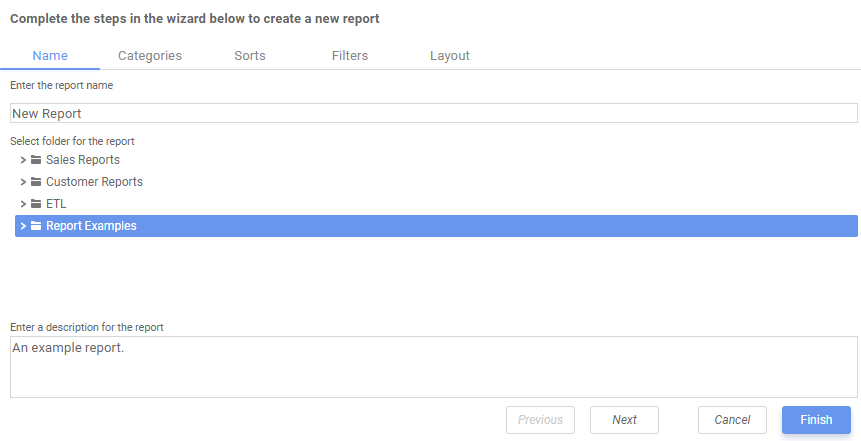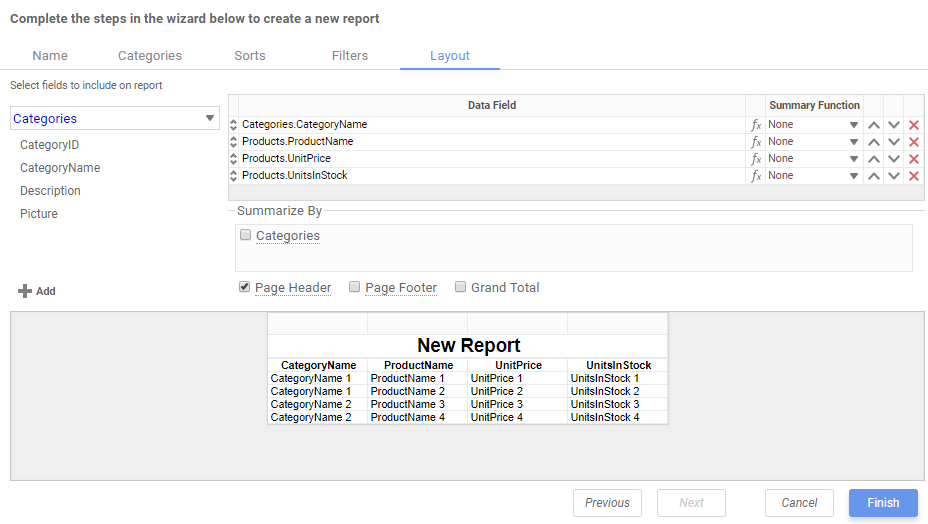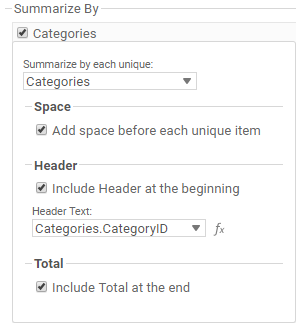...
The New Report wizard will come up. The New Report wizard has five sub tabs. The Name and CatagoriesCategories tabs must be completed while the other tabs are optional.
Name Tab
In the Name tab, enter a report name and click on the folder where the report will be saved.
...
Note: You cannot create a report inside a folder that is read-only ().
Categories Tab
In the Categories Tab, select the Data Categories that you would like to have access to on the report. It is important to understand two terms: Data Category and Data Field.
...
Note: For each category selected, a user can Suppress Duplicates within the data by ticking the check box that appears next to the category name. This will suppress repeated items in the given category for the final report.
Sorts Tab
In the Sorts tab, specify which Data Fields will be used to determine the order of data on the report.
...
Note: Sorts are not mandatory in order to create a report. Sorts allow for more complex organization of a report but do not bar the report wizard from continuing if left blank.
Filters Tab
In the Filters tab, create statements that will be used to filter the data when you run a report.
...
Important: If a filter is chosen, the above fields must be completed or the report will not execute.
The Layout Tab
In the Layout tab, select the Data Fields that will appear on the report. For each Data Field chosen, the report will automatically create a column header and place the Data Field in the detail section. Additionally, subtotals, grand totals, and a page header/footer can be created.
Display Data
- To place a Data Field on the report, either drag and drop it to the ‘Data Field’ column, use the Add button, or double-click the field.
- Use the up () and down () arrows to indicate the order the Data Fields should appear on the report. The Data Field at the top will appear on the report as the left-most column.
- The Summary Function column is used to make subtotals and grand totals. See Subtotals and Grand Totals below for more information.
- To remove a Data Field, click the delete button ().
Using the ‘Summarize By’ box, you can display subtotals, grand totals, or headers for the values of a Data Field.
Subtotals and Grand Totals
- To display subtotals, check the box of the category you want subtotals for in the Summarize By box. Then, for each Data Field you want totaled, select a Summary Function (see below).
- To display grand totals, check the Grand Total box. Then for each Data Field you want totaled, select a Summary Function (see below).
Summary Functions:
- Sum: Totals the all of the data in the Data Field.
- Count: Returns the number of rows in the Data Field.
- Average: Takes the mean of the data in the Data Field.
- Minimum: Displays the lowest value in the Data Field.
- Maximum: Displays the highest value in the Data Field.
Data Headers
A checkbox will appear in the Summarize By box for each Data Category in the Sorts tab. To display a header for each value of a Data Field, click on the associated Data Category in the Summarize By box. Click the Data Category name next to the checkbox, and the will appear.
...







